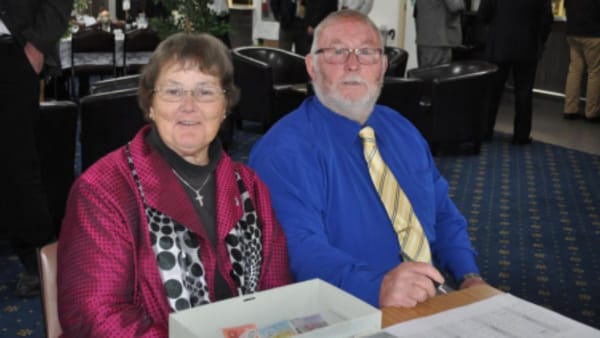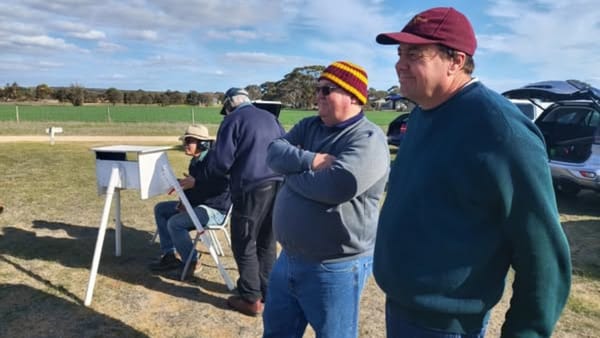More must be done to stop men dying too young, advocates say
Representatives of Movember, Healthy Male and the Australian Men’s Shed Association are calling on governments to invest in preventative health.
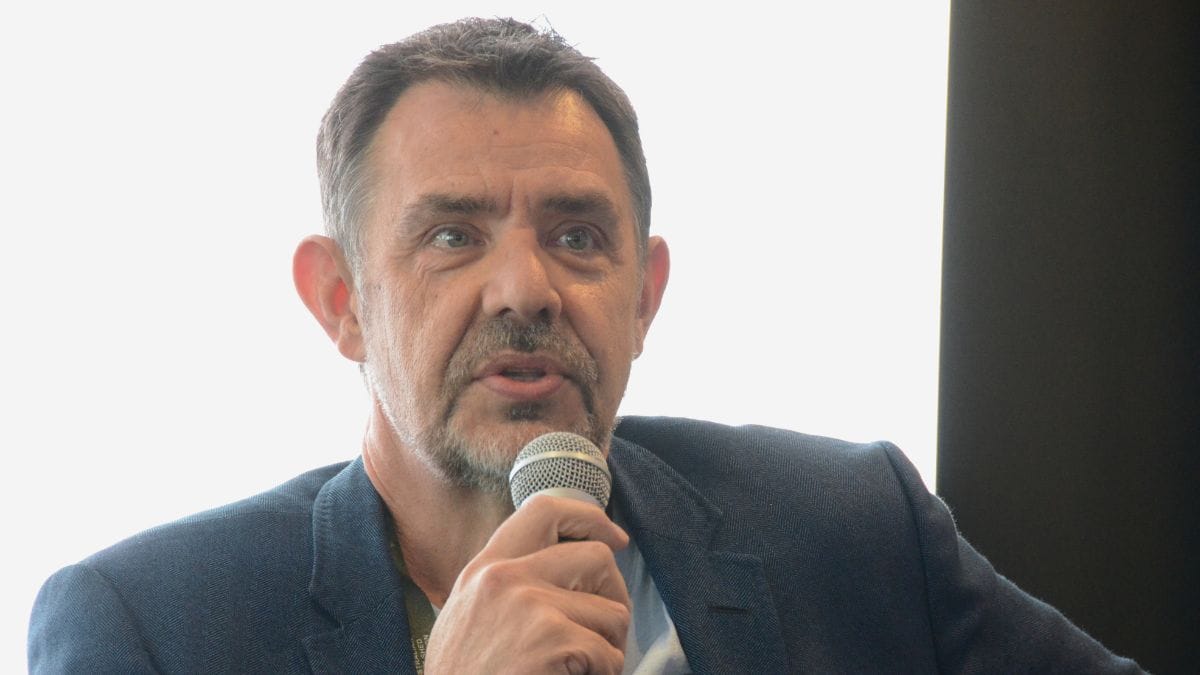
This story is free to read. Murray Bridge News relies on your support to tell important stories like this – please subscribe today.
Prevention is better than cure, and governments need to spend more money on it, three leading men’s health advocates say.
In Murray Bridge on Wednesday, at a national conference of the Australian Men’s Shed Association, Movember’s Gautam Raju, Healthy Male’s Simon von Saldern and the AMSA’s David Helmers called on state and federal governments to do more to make sure men got the health care they needed.
That didn’t necessarily mean building more hospitals or employing more doctors, though, Mr von Saldern said.
Take osteoarthritis of the knee, for example.
“(A recent study) found that getting a surgeon to go in and having a bit of a clean-up was way less effective than if you lost five kilograms and did some exercise,” he said.
“That’s where you get better outcomes; and you’re not paying a surgeon to do it, you’re not having all that risk.”
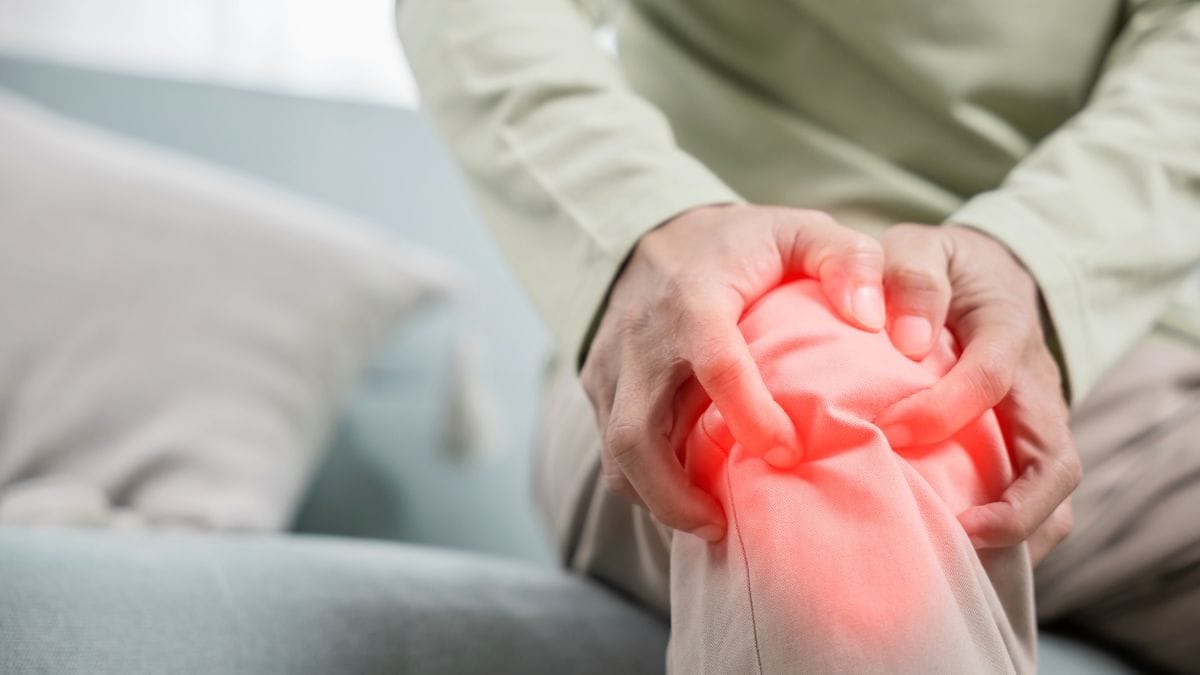
Three quarters of Australian men were overweight, three quarters of the Australians who died by suicide were men, and 90% of those who died in workplace accidents were men, he said.
Almost half of the chronic illnesses men experienced could have been prevented by doing simple things like eating enough fruit and vegetables – something just 3% of men did each week.
The problem was that, too often, men didn’t change their habits in response to health issues.
“If you’re the coach of a team and I said ‘you’ve gotta do a couple of things, and it gives you a 40 per cent better chance of playing in finals’, you’d do it every day of the week,” he said.
“But for some reason we stop when someone says ‘it really comes down to your diet and exercise’.”
Why was it so hard to change?
One barrier was the need for men to go to health services, rather than health services reaching out to men where they were, Mr Raju said.
“Men are leaving it too late to show up to the doctor, and when they do show up to the doctor they’re not getting the treatment they need,” he said.
“We’re advocating for government that is able to reach men where they’re at … a health system that’s able to reach, respond to and retain men when they’re in it.”
Many women developed a relationship with the health system as they accessed contraception and maternal health care from their teens onwards, Mr von Saldern argued.
But men did not have the same experience.
“For a guy of the same age … the first time he sees a doctor after about the age of 16 is if it’s broken or it doesn’t work,” he said.
“His (relationship) is transactional – he turns up because ‘I busted my arm playing footy’ or ‘I broke my leg’ or ‘I’ve got this rash’.
“He never really forms those (relationships), and the doctors don’t form a body of knowledge about how to communicate with him.”
That had negative implications for older men, he suggested, as GPs too often accepted it as inevitable that 75-year-old men would experience prostate or blood pressure issues.
“(Being a GP) is one of the toughest jobs around, but we’ve got to make sure the standards are better, that men are comfortable engaging and that there’s a variety of ways to engage,” he said.
What needs to change?
All three advocates called on the shedders at the conference, and all Australians, to talk to their local members of parliament about the need to fund preventative health programs for men.
Places like the Murraylands Community Men’s Shed, and 2500 more sheds like it around Australia, had become centres for “health by stealth”, Mr Helmers said – “just don’t tell the men”.
But there was also a need for:
- greater use of telehealth for initial consultations with working men
- formal support systems for men as they reached adulthood, fatherhood and retirement
- health information in plain English for men with poor literacy skills
- more training for GPs in how to communicate with men who resisted health advice
- provision of more health information on social media platforms like TikTok
“Investing in men’s health is not only good for men themselves, but it’s good for families, communities and society as a whole,” Mr Raju said.
“We want action from government.
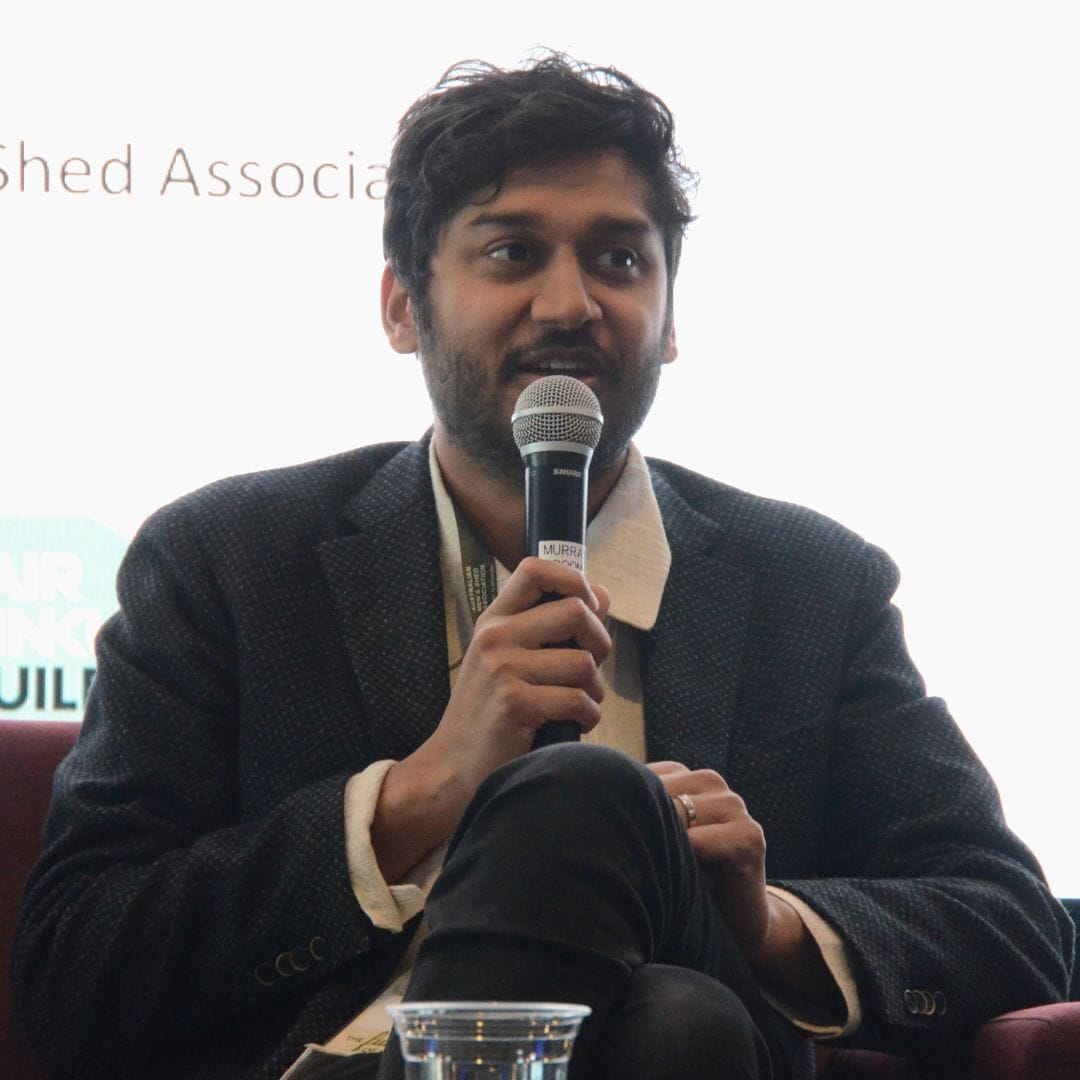
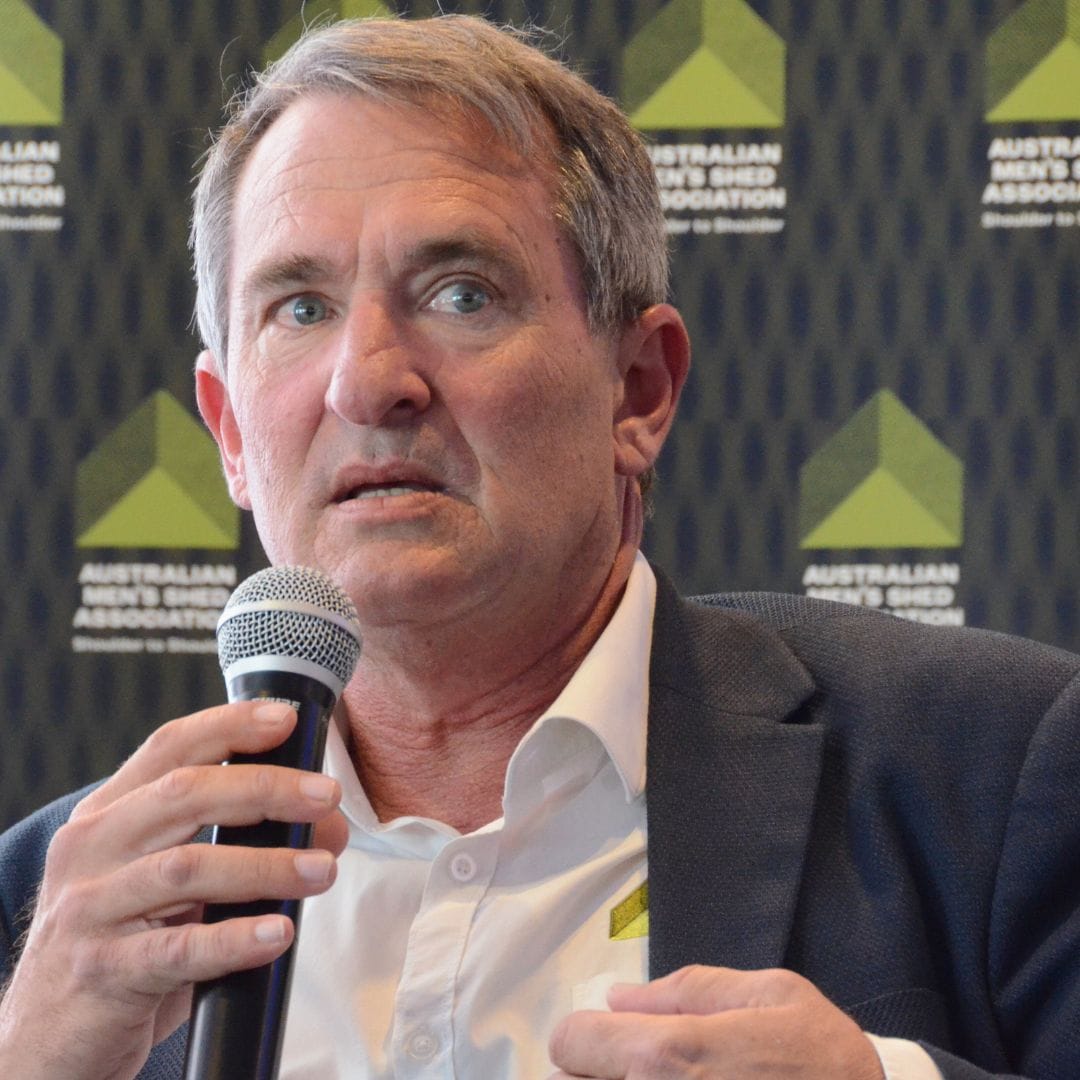
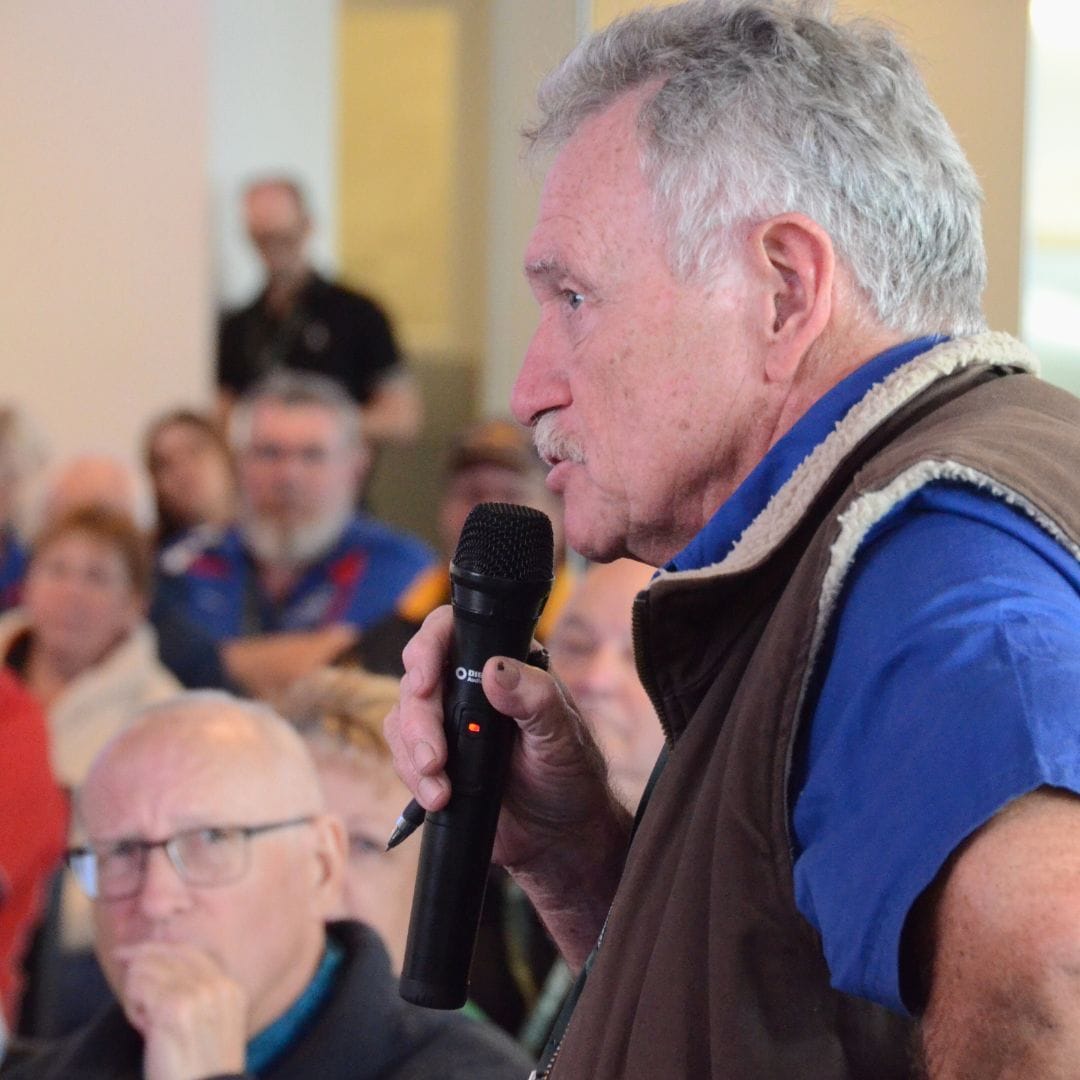
Gautam Raju and David Helmers talk about the state of men's health, and respond to questions from the audience, in Murray Bridge on Wednesday. Photos: Peri Strathearn.
“It’s great to see politicians to come today and say ‘yes, men’s sheds are awesome’, but what we aren’t seeing from politicians is actual resourcing.
“We want to put pressure on decision-makers to resource this in a way that makes it easy for everyone to have an impact in their communities.”
Mr von Saldern agreed.
“Your sons deserve it and your grandkids deserve it, and it’s important that they have a better relationship with the health system than we did,” he said.
“That’s the best gift we can give them.”
- Get help: Talk to your GP; find a local health service that suits you at murraymallee.servicesdirectory.org.au; call Lifeline on 13 11 14 or Beyond Blue on 1300 224 636; or, in an emergency, call 000. Or visit the Murraylands Community Men’s Shed at Murray Bridge Showground between 8am and 12pm on weekdays.
- More information: Visit movember.com or healthymale.org.au.
- Social photos: 10th National Men’s Shed Gathering
Disclosure: Murray Bridge News was paid to take photos at the conference by the Australian Men’s Shed Association.


